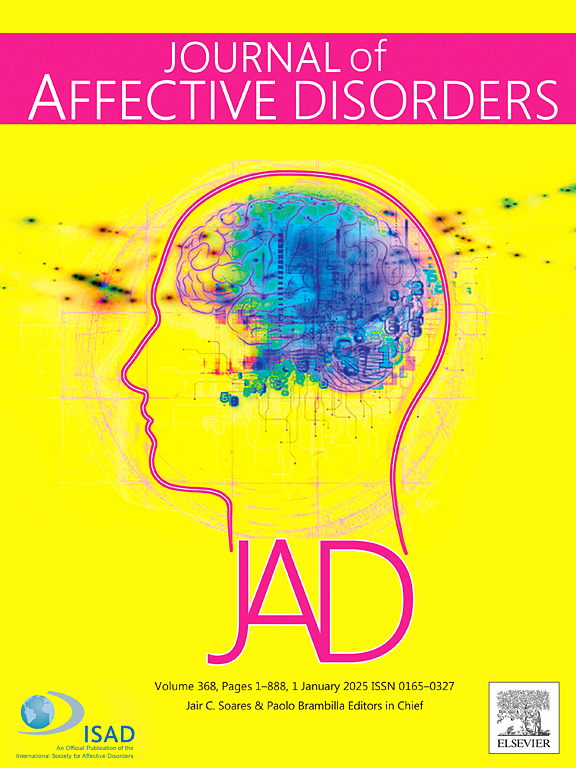The interplay between childhood trauma, hopelessness, depressive symptoms, and mental pain in a large sample of patients with severe mental disorders: A network analysis
IF 4.9
2区 医学
Q1 CLINICAL NEUROLOGY
引用次数: 0
Abstract
Background
Mental pain represents a significant risk factor for suicidal behavior in severe mental disorders. The present study aims to investigate the interplay between childhood traumatic experiences, hopelessness, depressive symptoms and mental pain, using a network analysis approach in a large transdiagnostic sample of participants living in the community.
Methods
The present investigation was conducted using data gathered in a multicentric observational cross-section study organized as a joint project, including different Italian research and clinical settings. Considering the assessment tools adopted in the study, 12 different variables were included as nodes in the EBICglasso network analysis. Stability of the edges and of centrality indices were assessed using bootstrap procedures, considering case-dropping and node-dropping procedures.
Results
A total of 2147 participants were included in the analysis. Mental pain represents a central feature in a complex network of relationships, including traumatic experiences, hopelessness, and depressive symptoms. More in deatail, mental pain and, to a lesser extent, affective and cognitive depressive symptoms emerged as the most central and influential nodes of the network, highlighting the strong link existing between these aspects and their importance in the lives of people with mental disorders.
Conclusions
Results confirm the importance of mental pain as a transdiagnostic feature, requiring careful assessment and consideration in all patients, beyond the diagnostic categories and regardless of suicide risk. Assessing and managing the presence and severity of mental pain should be taken into account in clinical practice, in the perspective of providing significant clinical benefits, as well as relevant research insight.
求助全文
约1分钟内获得全文
求助全文
来源期刊

Journal of affective disorders
医学-精神病学
CiteScore
10.90
自引率
6.10%
发文量
1319
审稿时长
9.3 weeks
期刊介绍:
The Journal of Affective Disorders publishes papers concerned with affective disorders in the widest sense: depression, mania, mood spectrum, emotions and personality, anxiety and stress. It is interdisciplinary and aims to bring together different approaches for a diverse readership. Top quality papers will be accepted dealing with any aspect of affective disorders, including neuroimaging, cognitive neurosciences, genetics, molecular biology, experimental and clinical neurosciences, pharmacology, neuroimmunoendocrinology, intervention and treatment trials.
 求助内容:
求助内容: 应助结果提醒方式:
应助结果提醒方式:


